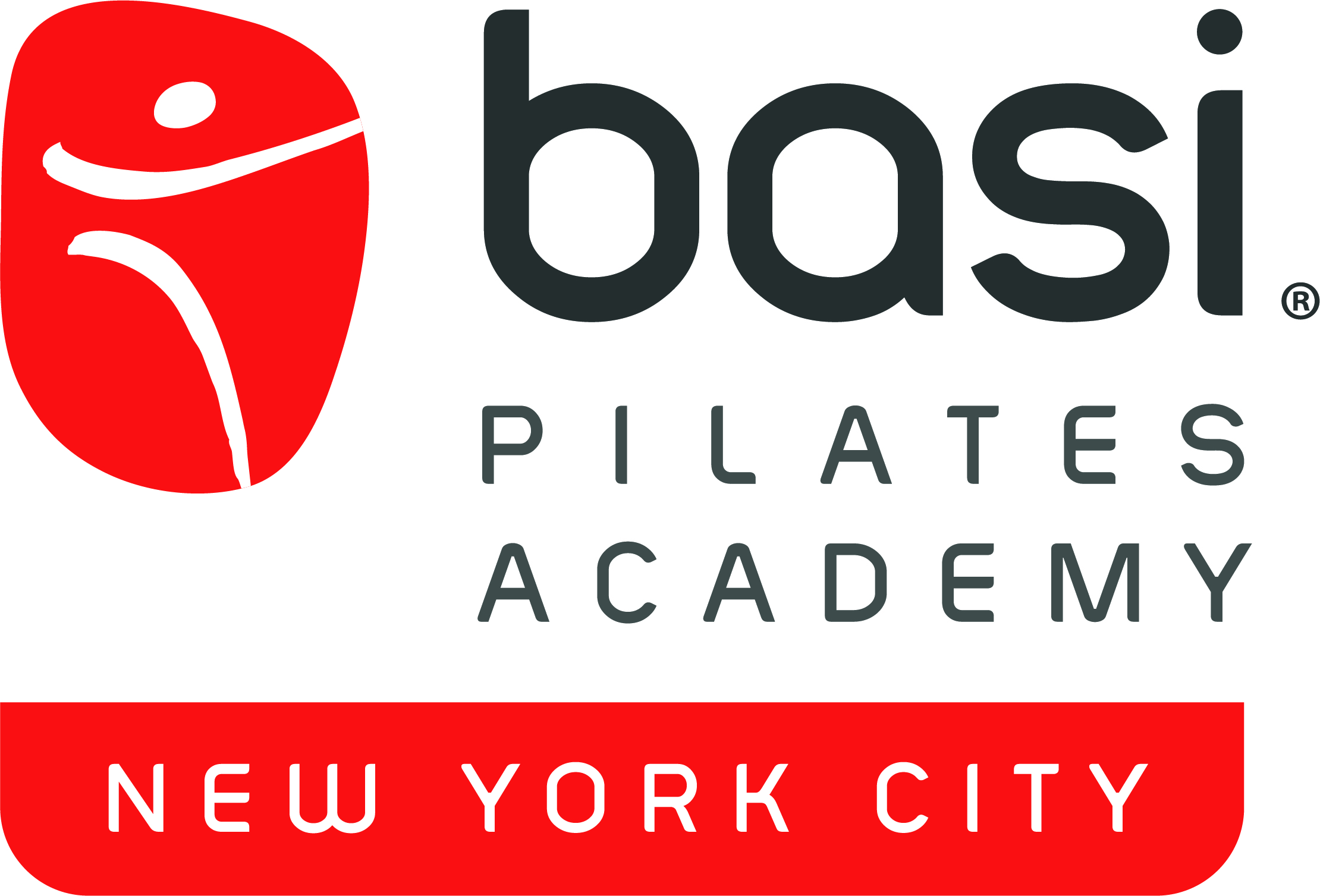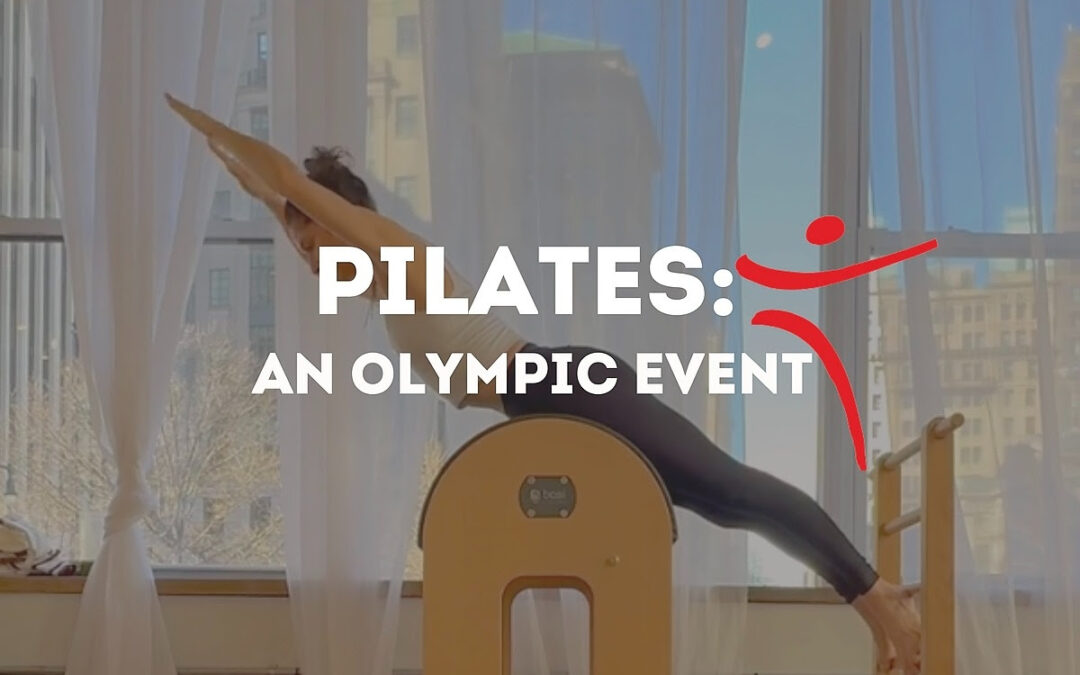There are no Pilates competitions. There will be NO Pilates event in the Olympics. (Although every event captures the theoretic and movement principles perfectly:)
I remind my students in the BASI Pilates Comprehensive Teacher Training Program of this all the time.
It truly is about the pathways of your movement towards the most full expression of the repertoire. The work you put into your Pilates practice is meant to create a capable body with great strength though your most full range of motion. While it can certainly be your sole form of exercise, it almost never is. At the very least you apply your knowledge from taking Pilates classes or privates to the way you walk down the street, up the stairs in your house, how you get up and down from the ground, and how you play with your littles. For many of us, we have a sport or activity that we love and use Pilates as a training tool for being the most efficient at that endeavor. The athletic tune is a structured formatted class that can act as a tune up, warmup, cool down, workout, or a test of your abilities from the Pilates mat to a standing position ready for all functional movements.
The Pilates reformer, Cadillac, chair and other apparatus aside – Pilates matwork acts as an incredible training tool for achieving your strongest body, healthy spine, and clear mind. Each exercise reveals strengths, weaknesses, tightness and flexibility in your body that we can put to the test in and out of a standing position. I have been doing this for more than half of my life now by using Pilates to keep me dancing. My dance and Pilates studies inform each other greatly and I have always pulled from this pursuit to be a better teacher.
A good example are my hips. They use to always pop or crunch during certain movements while I am performing. This is a common issue for dancers due to an unstable pelvis against legs that are trying to create extreme ranges of motion. In the Pilates studio I work on strengthening the entire 360 circumference of my hips and glutes in all ranges of motion, small and big, to test my ability to stabilize my pelvis. I discovered a lot about hip flexor strength and standing leg support. These themes I carry to and fro are seemingly what many of my students need as well in their non-dancer life.
Find Your Athletic Tune: What moves you?! Is there a sport or activity you love to play, used to play, or wish you played. What attracts you to that sport? Is it a mental or physical feeling? An endorphin rush, the awards or medals, the camaraderie? It is important to identify this part of it so that you can develop sustainable workouts for your life. I once worked with a professional basketball player coming towards the end of his career and I remember a conversation of something that we held in common. He said I want to be able to play basketball with my kids. I want to dance forever. However I do that in whatever form I will accept. I found his remark admirable because so many professional athletes and extreme sportsmen and women often give up entirely with an all or nothing attitude.
My motto is- We don’t take any of the accolades with us when we leave this earth, so just do what you love forever.
I may be leading myself into another blog as I often do, but after we find our athletic tune we must….
Listen to your Athletic Tune:
“To achieve the highest accomplishments within the scope of our capabilities in all walks of life we must constantly strive to acquire strong, healthy bodies and develop our minds to the limits of our ability.” – Joseph H Pilates The Athletic Tune is my signature class created and inspired by decades of continued study of codified dance techniques and teaching movement layered with classic Pilates matwork. The 3 part class can be puzzled in any order but typically begins with the standing technical flow and moving into the Pilates matwork.
It is the art of repetition and learning to work deeper that a real athlete understands. There are basically 10 movement phrases to the standing portion of class. Each movement has many versions from fundamental to advanced, they should be in clear form but never eliminated, but maybe replaced or modified.
The examples I give in the videos here are:
Planking
(Showing most challenging to fundamental)
1. Penché knee tuck with a jump
2. Penché knee tuck with a hop
3. Penché kick up into knee tuck
4. Knee stretches knees off single leg
5. Leg Pull Front
6. Front Support
7. Straight leg hip extension (gluteals muscles kneeling series)
8. Quadruped with shoulder retractions
All of the above versions are valid. Many people view this work as arm strength when in reality it is so much more about placement and mechanics. Strength should build off the proper placement of the shoulder girdle and pelvis. As soon as the leg lifts to the back, it is important to have the proper connection into the hip extensors so that the lumbar spine does not bear all the force. Springing off the feet must not be overlooked even as you work to keep the head aligned in the inversion.
Flat Backs
A. With bent knees hands behind back
B. Bent knees, arms long to sides of torso
C. Bent knees, hands behind head
D. Bent knees, hands behind head with a reach in flat back
E. All of the above with straight knees
F. Arms straight overhead, hands interlaced
G. Arms straight overhead
H. Arms straight overhead with arm reaches to sides of torso
All of the above versions are valid ways of strengthening the back extensors, strengthening and lengthening the hamstrings, working shoulder range of motion, and understanding weight placement in the feet. Some goals with technique here are to bias the weight towards your toes to avoid rocking back in the heels and throwing off the pelvis placement, maintaining clean hip flexion with no spinal flexion, keeping the head alignment in neutral, working the shoulder flexors or extensors throughout.
Balances
1. Pulling the moving leg up to ankle or calf height and then reaching the leg back to the ground, returning to starting position
2. Same as B but keeping the foot off the ground as you reach it back and to starting position. (Not shown)
3. Same as C but bending the standing knee as you reach the leg back
4. Pulling the moving leg up to the standing knee to start and reaching the leg back in space, returning to starting position
5. Same as E but with a bent standing knee as you reach the leg back
6. Working on F but with a larger range. (Not shown)
7. Working on G but with a calf raise on the return. (Not shown)
I could go on and on with progressions. You could even hold a wall, counter top, or back of a chair for added support on any of these. All versions are valid, all work on the act of balancing but choosing the best version for you is when you make choices that challenge your skill and technique. Some goals with technique are: Pulling up on the standing leg, finding neutral alignment on every return, keeping the hips level, using the muscles in the glutes rather than the lower back to reach the leg back, having a clear focus for proprioception.
Play: This is the goal
Play could mean to play your sport, or to simply play at the park. Your skill set should grow and evolve throughout the phases of your life. Building strength through range of motion will mean different things to you over time. At one point in life you may be recovering from an injury, or waking on peak performance. While your purpose or intention may change, I hope to instill the ability to feel freedom and possibility during “play” after all the technical work. In this we can start to see the similarities in a professional athlete and a grandparent playing with their grandkids.
Your performance even when you are the only one in the room matters- but it doesn’t matter at all. Noone really cares about how good you are. Unless you are Simone Biles:) I’ll give you 2 examples in my own life. The first is that I find joy in dance and dance training. I get the same high from performing in class as I did when I was on stage. In fact I feel blessed that arguably I feel happier not performing. I’ve reflected greatly on the feeling I need to create in my body to enter my flow state and fulfill my soul. Ultimately this comes from being grateful to move. And far more grateful for my call to move rather than how good I am.
Second, I started skiing as an adult, many of my friends are professional or at a professional level. Should I not ski because I am not as good as them? Or should I work hard at attaining skill, and then continue to practice that skill finding joy in the mountain and with what I am capable of? I usually book a lesson once a year and work on specific skills for however many days I get out that winter. Or I just barrel down the mountain trying to keep up with my 6 year old.
FOLLOW US
For full length videos that benefit our scholarship program visit Virtualogic.earth

